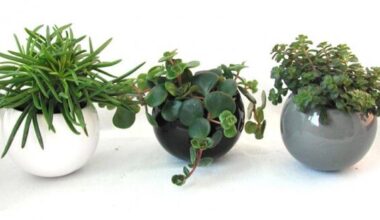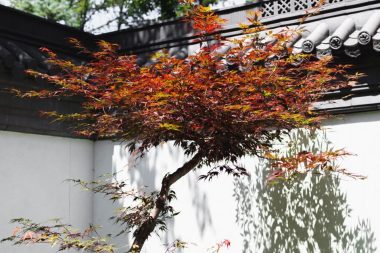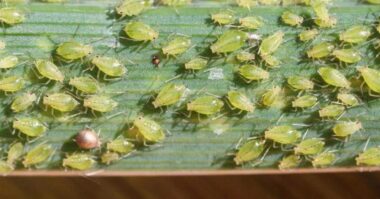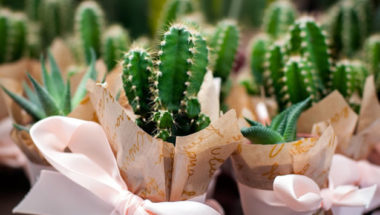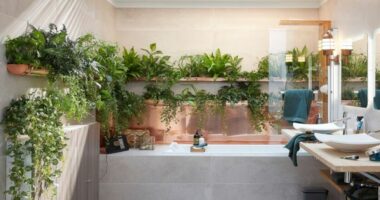The jar is both a decorative object and a miniature ecosystem. Original and full of charm, it enhances the plants it houses. The particular conditions of culture (humidity, restricted space, rare substrate) imply however some precautions.
Contents
Which plants for a dry jar ?
As the name suggests, a dry jar provides an environment with a fairly high temperature and low humidity. Regarding the soil, gardeners use sand or other dry substrate for its realization. So that the plant can live in autonomy within its interior, its needs in water must be restricted, unless its leaves contain a rather important reserve of water.
It is then advisable to choose plants of dry or desert environments like the fatty plants and the cacti. Fatty plants do not require regular watering because they store a large amount of sap in their leaves and stems. As for cacti, they do not have leaves and therefore do not lose much water. Here are some varieties of flowers that can be planted in a dry jar:
- Haworthia: it is a variety of succulent plants with rosettes which is particularly adapted to the jar thanks to its reduced development. They are presented under different aspects to give a varied and harmonious composition.
- Pebble plants: having a reduced development and very varied colors, these types of plants are perfect to be planted in a jar. Nothing better to bring originality in its interior.
- The small balls of cactus: easy to plant, these are ideal for those who do not have green hands. To give dynamism it is possible to associate them with cactus type oponce that is to say cacti in snowshoes and candle cacti.
Which plants for an open jar ?
When a jar is open, it contains less moisture. The more the container is opened, the more moisture is reduced due to evaporation. As a result, the plants adapted to this kind of environment are more or less the same as those in a dry jar.
However, these types of open miniature garden provide a wider possibility, as it does not represent a constraint for the development of leaves. Here are some suggestions for a floral arrangement for open jar :
- A mixture of senecio rowleyanus and chain of hearts sprinkled with a few shots of Sedum morganianum. These varieties of plants are especially appreciated for their drooping ports which give a slightly wild look.
- For a luxurious jar, it is advisable to choose orchids and mix them with wild plants. In this context, it is for example possible to mix Robert’s grass with a white corolla orchid. However, the latter should not be mixed with succulents or undergrowth grasses.
- For a sober atmosphere, cacti are the best choice. A combination of ball cacti and candle cactus will give relief to the jar. To make them bloom, it is advised to put them in a sunny corner.
Which plant for a closed jar ?
Thanks to the humidity it contains, the closed jar is suitable for many more varieties of plants. It is necessary, however, to choose plants adapted to a very humid environment such as:
- The moss
The moss alone is ideal for decorating a jar. Simply mix it with decorative accessories made of wood or mineral. For a moss jar, you can choose :
- Ball foam for its bright color. It can be used as a carpet in base of decoration;
- Riccia fluitans foam which can be used as a carpet;
- For more height and relief, the Cesiculiaria reticulata type foam would be better adapted;
- If the moss is intended to dress a particular accessory like a root or a stone, it is then advised to lean for the Marchantiophyta able to cling to the support on which it is planted. Also, its bright color enhances the accessory associated with it.
- The fern
Recognized as an aquatic plant, the fern adapts very well to a humid environment such as that of a closed jar. There is a wide variety of them that can be highlighted in this type of garden. Nevertheless, one should always choose the “dwarf” species so that they can grow comfortably in the jar. In this sense, here are some ideal varieties for a closed universe:
- The Davallia : its frank green color and its crawling ports will give a mysterious look to the jar ;
- The Asplenium type ferns are perfectly suited to bring originality to the jar culture thanks to their aerial aspects and their foliage with atypical colors;
- To recreate a miniature scene and reproduce small green bushes, Selaginella martensii will be perfect;
- Nephrolepsis and athyrium will bring a touch of softness.
In addition to aquatic plants, closed jars also lend themselves to other varieties of plants such as epiphytes, carnivorous plants and plants with decorative foliage, as long as the above-mentioned selection criteria are met.
The placement of plants in the jar
Different types of plantings are possible, but in general (unless you choose plants with very low water requirements) it is imperative to provide a drainage system. Indeed, the bottom of the container is not pierced, water cannot drain out and its stagnation can lead to rotting and odours.
Here is an example of a structure that is easy to reproduce :
- A good layer of gravel or clay balls (1 inch high) is placed at the bottom of the jar to serve as a water reservoir.
- A garden felt (or, failing that, a synthetic fabric such as nylon or mosquito netting) placed above the gravel will prevent the soil from being dragged away during watering.
- The substrate should be chosen according to the plants: compost for cacti and sand for greasy plant compositions, flowering compost with peat added (or equivalent: perlite, vermiculite) for wetland plants…
The soil (substrate) and subsoil (gravel) should occupy between a third and a half of the height of the jar, the rest being reserved for plants… and air! Then the plants (allow enough space between two plants to allow good air circulation) and any decorative elements (rocks, bark …).
Tips: A piece of charcoal or a layer of activated charcoal placed on the felt will absorb odours and limit bacterial development. To pour the potting soil, you can use a funnel (a piece of flexible cardboard rolled up on itself will do) to avoid dirtying the walls of the container.
Jar plant maintenance
Other than occasional watering, the only maintenance will be to pinch or prune the plants to control their growth and sometimes replace a plant that is really overflowing the designated space. It’s best to avoid fertilizing, at least for the first 12 months, and even then, only very modestly. You don’t want to stimulate too rapid growth.
Some jars work without further modification for 15 to 20 years. A well-planned jar is really the ideal garden for a lazy gardener!
Summary
Bottle gardens have a fascinating side because one wonders how the different plants could have been brought in through such a narrow neck and how they could have been installed.
What is less well known is that it is a garden in a closed vase, which lives its own life without maintenance: once the garden has been created, the bottle is hermetically sealed and never touched, the plants are never watered, and the cap is never removed. The garden only needs the sun’s rays to make an ecosystem work and be self-sufficient.


